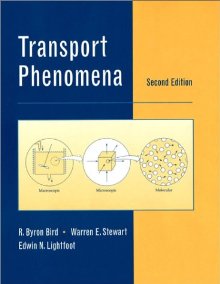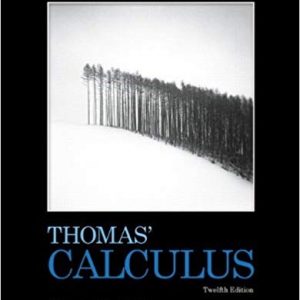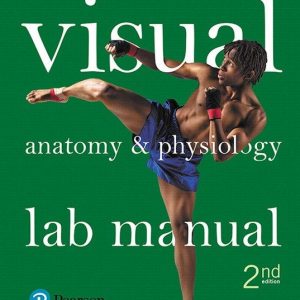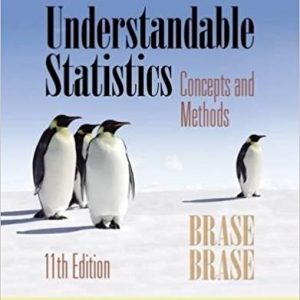This is completed downloadable of Solutions Manual to accompany Transport Phenomena 2nd edition 9780471410775
Product Details:
- ISBN-10 : 0471410772
- ISBN-13 : 978-0471410775
- Author:
Careful attention is paid to the presentation of the basic theory.
* Enhanced sections throughout text provide much firmer foundation than the first edition.
* Literature citations are given throughout for reference to additional material.
Table of Content:
- Chapter 0. The Subject of Transport Phenomena
- Part One. Momentum Transport
- Chapter 1. Viscosity and the Mechanisms of Momentum Transport
- 1.1 Newton’s Law of Viscosity (Molecular Momentum Transport)
- EXAMPLE 1.1-1 Calculation of Momentum Flux
- 1.2 Generalization of Newton’s Law of Viscosity
- 1.3 Pressure and Temperature Dependence of Viscosity
- EXAMPLE 1.3-1 Estimation of Viscosity from Critical Properties
- 1.4 Molecular Theory of the Viscosity of Gases at Low Density
- EXAMPLE 1.4-1 Computation of the Viscosity of a Pure Gas at Low Density
- EXAMPLE 1.4-2 Prediction of the Viscosity of a Gas Mixture at Low Density
- 1.5 Molecular Theory of the Viscosity of Liquids
- EXAMPLE 1.5-1 Estimation of the Viscosity of a Pure Liquid
- 1.6 Viscosity of Suspensions and Emulsions
- 1.7 Convective Momentum Transport
- Questions for Discussion
- Problems
- Chapter 2. Shell Momentum Balances and Velocity Distributions in Laminar Flow
- 2.1 Shell Momentum Balances and Boundary Conditions
- 2.2 Flow of a Falling Film
- EXAMPLE 2.2-1 Calculation of Film Velocity
- EXAMPLE 2.2-2 Falling Film with Variable Viscosity
- 2.3 Flow Through a Circular Tube
- EXAMPLE 2.3-1 Determination of Viscosity from Capillary Flow Data
- EXAMPLE 2.3-2 Compressible Flow in a Horizontal Circular Tube
- 2.4 Flow through an Annulus
- 2.5 Flow of Two Adjacent Immiscible Fluids
- 2.6 Creeping Flow around a Sphere
- EXAMPLE 2.6-1 Determination of Viscosity from the Terminal Velocity of a Falling Sphere
- Questions for Discussion
- Problems
- Chapter 3. The Equations of Change for Isothermal Systems
- 3.1 The Equation of Continuity
- EXAMPLE 3.1-1 Normal Stresses at Solid Surfaces for Incompressible Newtonian Fluids
- 3.2 The Equation of Motion
- 3.3 The Equation of Mechanical Energy
- 3.4 The Equation of Angular Momentum
- 3.5 The Equations of Change in Terms of the Substantial Derivative
- EXAMPLE 3.5-1 The Bernoulli Equation for the Steady Flow of Inviscid Fluids
- 3.6 Use of the Equations of Change to Solve Flow Problems
- EXAMPLE 3.6-1 Steady Flow in a Long Circular Tube
- EXAMPLE 3.6-2 Falling Film with Variable Viscosity
- EXAMPLE 3.6-3 Operation of a Couette Viscometer
- EXAMPLE 3.6-4 Shape of the Surface of a Rotating Liquid
- EXAMPLE 3.6-5 Flow near a Slowly Rotating Sphere
- 3.7 Dimensional Analysis of the Equations of Change
- EXAMPLE 3.7-1 Transverse Flow around a Circular Cylinder
- EXAMPLE 3.7-2 Steady Flow in an Agitated Tank
- EXAMPLE 3.7-3 Pressure Drop for Creeping Flow in a Packed Tube
- Questions for Discussion
- Problems
- Chapter 4. Velocity Distributions with More than One Independent Variable
- 4.1 Time-Dependent Flow of Newtonian Fluids
- EXAMPLE 4.1-1 Flow near a Wall Suddenly Set in Motion
- EXAMPLE 4.1-2 Unsteady Laminar Flow between Two Parallel Plates
- EXAMPLE 4.1-3 Unsteady Laminar Flow near an Oscillating Plate
- 4.2 Solving Flow Problems Using a Stream Function
- EXAMPLE 4.2-1 Creeping Flow around a Sphere
- 4.3 Flow of Inviscid Fluids by Use of the Velocity Potential
- EXAMPLE 4.3-1 Potential Flow around a Cylinder
- EXAMPLE 4.3-2 Flow into a Rectangular Channel
- EXAMPLE 4.3-3 Flow near a Corner
- 4.4 Flow near Solid Surfaces by Boundary-Layer Theory
- EXAMPLE 4.4-1 Laminar Flow along a Flat Plate (Approximate Solution)
- EXAMPLE 4.4-2 Laminar Flow along a Flat Plate (Exact Solution)
- EXAMPLE 4.4-3 Flow near a Corner
- Questions for Discussion
- Problems
- Chapter 5. Velocity Distributions in Turbulent Flow
- 5.1 Comparisons of Laminar and Turbulent Flows
- 5.2 Time-Smoothed Equations of Change for Incompressible Fluids
- 5.3 The Time-Smoothed Velocity Profile near a Wall
- 5.4 Empirical Expressions for the Turbulent Momentum Flux
- EXAMPLE 5.4-1 Development of the Reynolds Stress Expression in the Vicinity of the Wall
- 5.5 Turbulent Flow in Ducts
- EXAMPLE 5.5-1 Estimation of the Average Velocity in a Circular Tube
- EXAMPLE 5.5-2 Application of Prandtl’s Mixing Length Formula to Turbulent Flow in a Circular Tube
- EXAMPLE 5.5-3 Relative Magnitude of Viscosity and Eddy Viscosity
- 5.6 Turbulent Flow in Jets
- EXAMPLE 5.6-1 Time-Smoothed Velocity Distribution in a Circular Wall Jet
- Questions for Discussion
- Problems
- Chapter 6. Interphase Transport in Isothermal Systems
- 6.1 Definition of Friction Factors
- 6.2 Friction Factors for Flow in Tubes
- EXAMPLE 6.2-1 Pressure Drop Required for a Given Flow Rate
- EXAMPLE 6.2-2 Flow Rate for a Given Pressure Drop
- 6.3 Friction Factors for Flow around Spheres
- EXAMPLE 6.3-1 Determination of the Diameter of a Falling Sphere
- 6.4 Friction Factors for Packed Columns
- Questions for Discussion
- Problems
- Chapter 7. Macroscopic Balances for Isothermal Flow Systems
- 7.1 The Macroscopic Mass Balance
- EXAMPLE 7.1-1 Draining of a Spherical Tank
- 7.2 The Macroscopic Momentum Balance
- EXAMPLE 7.2-1 Force Exerted by a Jet (Part a)
- 7.3 The Macroscopic Angular Momentum Balance
- EXAMPLE 7.3-1 Torque on a Mixing Vessel
- 7.4 The Macroscopic Mechanical Energy Balance
- EXAMPLE 7.4-1 Force Exerted by a Jet (Part b)
- 7.5 Estimation of the Viscous Loss
- EXAMPLE 7.5-1 Power Requirement for Pipeline Flow
- 7.6 Use of the Macroscopic Balances for Steady-State Problems
- EXAMPLE 7.6-1 Pressure Rise and Friction Loss in a Sudden Enlargement
- EXAMPLE 7.6-2 Performance of a Liquid–Liquid Ejector
- EXAMPLE 7.6-3 Thrust on a Pipe Bend
- EXAMPLE 7.6-4 The Impinging Jet
- EXAMPLE 7.6-5 Isothermal Flow of a Liquid through an Orifice
- 7.7 Use of the Macroscopic Balances for Unsteady-State Problems
- EXAMPLE 7.7.1 Acceleration Effects in Unsteady Flow from a Cylindrical Tank
- EXAMPLE 7.7-2 Manometer Oscillations
- 7.8 Derivation of the Macroscopic Mechanical Energy Balance
- Questions for Discussion
- Problems
- Chapter 8. Polymeric Liquids
- 8.1 Examples of the Behavior of Polymeric Liquids
- 8.2 Rheometry and Material Functions
- 8.3 Non-Newtonian Viscosity and the Generalized Newtonian Models
- EXAMPLE 8.3-1 Laminar Flow of an Incompressible Power-Law Fluid in a Circular Tube
- EXAMPLE 8.3-2 Flow of a Power-Law Fluid in a Narrow Slit
- EXAMPLE 8.3-3 Tangential Annular Flow of a Power-Law Fluid
- 8.4 Elasticity and the Linear Viscoelastic Models
- EXAMPLE 8.4-1 Small-Amplitude Oscillatory Motion
- EXAMPLE 8.4-2 Unsteady Viscoelastic Flow near an Oscillating Plate
- 8.5 The Corotational Derivatives and the Nonlinear Viscoelastic Models
- EXAMPLE 8.5-1 Material Functions for the Oldroyd 6-Constant Model
- 8.6 Molecular Theories for Polymeric Liquids
- EXAMPLE 8.6-1 Material Functions for the FENE-P Model
- Questions for Discussion
- Problems
- Part Two. Energy Transport
- Chapter 9. Thermal Conductivity and the Mechanisms of Energy Transport
- 9.1 Fourier’s Law of Heat Conduction (Molecular Energy Transport)
- EXAMPLE 9.1-1 Measurement of Thermal Conductivity
- 9.2 Temperature and Pressure Dependence of Thermal Conductivity
- EXAMPLE 9.2-1 Effect of Pressure on Thermal Conductivity
- 9.3 Theory of Thermal Conductivity of Gases at Low Density
- EXAMPLE 9.3-1 Computation of the Thermal Conductivity of a Monatomic Gas at Low Density
- EXAMPLE 9.3-2 Estimation of the Thermal Conductivity of a Polyatomic Gas at Low Density
- EXAMPLE 9.3-3 Prediction of the Thermal Conductivity of a Gas Mixture at Low Density
- 9.4 Theory of Thermal Conductivity of Liquids
- EXAMPLE 9.4-1 Prediction of the Thermal Conductivity of a Liquid
- 9.5 Thermal Conductivity of Solids
- 9.6 Effective Thermal Conductivity of Composite Solids
- 9.7 Convective Transport of Energy
- 9.8 Work Associated with Molecular Motions
- Questions for Discussion
- Problems
- Chapter 10. Shell Energy Balances and Temperature Distributions in Solids and Laminar Flow
- 10.1 Shell Energy Balances; Boundary Conditions
- 10.2 Heat Conduction with an Electrical Heat Source
- EXAMPLE 10.2-1 Voltage Required for a Given Temperature Rise in a Wire Heated by an Electric Current
- EXAMPLE 10.2-2 Heated Wire with Specified Heat Transfer Coefficient and Ambient Air Temperature
- 10.3 Heat Conduction with a Nuclear Heat Source
- 10.4 Heat Conduction with a Viscous Heat Source
- 10.5 Heat Conduction with a Chemical Heat Source
- 10.6 Heat Conduction through Composite Walls
- EXAMPLE 10.6-1 Composite Cylindrical Walls
- 10.7 Heat Conduction in a Cooling Fin
- EXAMPLE 10.7-1 Error in Thermocouple Measurement
- 10.8 Forced Convection
- 10.9 Free Convection
- Questions for Discussion
- Problems
- Chapter 11. The Equations of Change for Nonisothermal Systems
- 11.1 The Energy Equation
- 11.2 Special Forms of the Energy Equation
- 11.3 The Boussinesq Equation of Motion for Forced and Free Convection
- 11.4 Use of the Equations of Change to Solve Steady-State Problems
- EXAMPLE 11.4-1 Steady-State Forced-Convection Heat Transfer in Laminar Flow in a Circular Tube
- EXAMPLE 11.4-2 Tangential Flow in an Annulus with Viscous Heat Generation
- EXAMPLE 11.4-3 Steady Flow in a Nonisothermal Film
- EXAMPLE 11.4-4 Transpiration Cooling
- EXAMPLE 11.4-5 Free Convection Heat Transfer from a Vertical Plate
- EXAMPLE 11.4-6 Adiabatic Frictionless Processes in an Ideal Gas
- EXAMPLE 11.4-7 One-Dimensional Compressible Flow: Velocity, Temperature, and Pressure Profiles in a
- 11.5 Dimensional Analysis of the Equations of Change for Nonisothermal Systems
- EXAMPLE 11.5-1 Temperature Distribution about a Long Cylinder
- EXAMPLE 11.5-2 Free Convection in a Horizontal Fluid Layer; Formation of Bénard Cells
- EXAMPLE 11.5-3 Surface Temperature of an Electrical Heating Coil
- Questions for Discussion
- Problems
- Chapter 12. Temperature Distributions with More than One Independent Variable
- 12.1 Unsteady Heat Conduction in Solids
- EXAMPLE 12.1-1 Heating of a Semi-Infinite Slab
- EXAMPLE 12.1-2 Heating of a Finite Slab
- EXAMPLE 12.1-3 Unsteady Heat Conduction near a Wall with Sinusoidal Heat Flux
- EXAMPLE 12.1-4 Cooling of a Sphere in Contact with a Well-Stirred Fluid
- 12.2 Steady Heat Conduction in Laminar, Incompressible Flow
- EXAMPLE 12.2-1 Laminar Tube Flow with Constant Heat Flux at the Wall
- EXAMPLE 12.2-2 Laminar Tube Flow with Constant Heat Flux at the Wall: Asymptotic Solution for the En
- 12.3 Steady Potential Flow of Heat in Solids
- EXAMPLE 12.3-1 Temperature Distribution in a Wall
- 12.4 Boundary Layer Theory for Nonisothermal Flow
- EXAMPLE 12.4-1 Heat Transfer in Laminar Forced Convection along a Heated Flat Plate (the von Kármá
- EXAMPLE 12.4-2 Heat Transfer in Laminar Forced Convection along a Heated Flat Plate (Asymptotic Solu
- EXAMPLE 12.4-3 Forced Convection in Steady Three-Dimensional Flow at High Prandtl Numbers
- Questions for Discussion
- Problems
- Chapter 13. Temperature Distributions in Turbulent Flow
- 13.1 Time-Smoothed Equations of Change for Incompressible Nonisothermal Flow
- 13.2 The Time-Smoothed Temperature Profile near a Wall
- 13.3 Empirical Expressions for the Turbulent Heat Flux
- EXAMPLE 13.3-1 An Approximate Relation for the Wall Heat Flux for Turbulent Flow in a Tube
- 13.4 Temperature Distribution for Turbulent Flow in Tubes
- 13.5 Temperature Distribution for Turbulent Flow in Jets
- 13.6 Fourier Analysis of Energy Transport in Tube Flow at Large Prandtl Numbers
- Questions for Discussion
- Problems
- Chapter 14. Interphase Transport in Nonisothermal Systems
- 14.1 Definitions of Heat Transfer Coefficients
- EXAMPLE 14.1-1 Calculation of Heat Transfer Coefficients from Experimental Data
- 14.2 Analytical Calculations of Heat Transfer Coefficients for Forced Convection through Tubes and S
- 14.3 Heat Transfer Coefficients for Forced Convection in Tubes
- EXAMPLE 14.3-1 Design of a Tubular Heater
- 14.4 Heat Transfer Coefficients for Forced Convection around Submerged Objects
- 14.5 Heat Transfer Coefficients for Forced Convection through Packed Beds
- 14.6 Heat Transfer Coefficients for Free and Mixed Convection
- EXAMPLE 14.6-1 Heat Loss by Free Convection from a Horizontal Pipe
- 14.7 Heat Transfer Coefficients for Condensation of Pure Vapors on Solid Surfaces
- EXAMPLE 14.7-1 Condensation of Steam on a Vertical Surface
- Questions for Discussion
- Problems
- Chapter 15. Macroscopic Balances for Nonisothermal Systems
- 15.1 The Macroscopic Energy Balance
- 15.2 The Macroscopic Mechanical Energy Balance
- 15.3 Use of the Macroscopic Balances to Solve Steady-State Problems with Flat Velocity Profiles
- EXAMPLE 15.3-1 The Cooling of an Ideal Gas
- EXAMPLE 15.3-2 Mixing of Two Ideal Gas Streams
- 15.4 The d-Forms of the Macroscopic Balances
- EXAMPLE 15.4-1 Parallel- or Counter-Flow Heat Exchangers
- EXAMPLE 15.4-2 Power Requirement for Pumping a Compressible Fluid through a Long Pipe
- 15.5 Use of the Macroscopic Balances to Solve Unsteady-State Problems and Problems with Nonflat Velo
- EXAMPLE 15.5-1 Heating of a Liquid in an Agitated Tank
- EXAMPLE 15.5-2 Operation of a Simple Temperature Controller
- EXAMPLE 15.5-3 Flow of Compressible Fluids through Head Meters
- EXAMPLE 15.5-4 Free Batch Expansion of a Compressible Fluid
- Questions for Discussion
- Problems
- Chapter 16. Energy Transport by Radiation
- 16.1 The Spectrum of Electromagnetic Radiation
- 16.2 Absorption and Emission at Solid Surfaces
- 16.3 Planck’s Distribution Law, Wien’s Displacement Law, and the Stefan–Boltzmann Law
- EXAMPLE 16.3-1 Temperature and Radiation-Energy Emission of the Sun
- 16.4 Direct Radiation between Black Bodies in Vacuo at Different Temperatures
- EXAMPLE 16.4-1 Estimation of the Solar Constant
- EXAMPLE 16.4-2 Radiant Heat Transfer between Disks
- 16.5 Radiation between Nonblack Bodies at Different Temperatures
- EXAMPLE 16.5-1 Radiation Shields
- EXAMPLE 16.5-2 Radiation and Free-Convection Heat Losses from a Horizontal Pipe
- EXAMPLE 16.5-3 Combined Radiation and Convection
- 16.6 Radiant Energy Transport in Absorbing Media
- EXAMPLE 16.6-1 Absorption of a Monochromatic Radiant Beam
- Questions for Discussion
- Problems
- Part Three. Mass Transport
- Chapter 17. Diffusivity and the Mechanisms of Mass Transport
- 17.1 Fick’s Law of Binary Diffusion (Molecular Mass Transport)
- EXAMPLE 17.1-1. Diffusion of Helium through Pyrex Glass
- EXAMPLE 17.1-2 The Equivalence of DAB and DBA
- 17.2 Temperature and Pressure Dependence of Diffusivities
- EXAMPLE 17.2-1 Estimation of Diffusivity at Low Density
- EXAMPLE 17.2-2 Estimation of Self-Diffusivity at High Density
- EXAMPLE 17.2-3 Estimation of Binary Diffusivity at High Density
- 17.3 Theory of Diffusion in Gases at Low Density
- EXAMPLE 17.3-1 Computation of Mass Diffusivity for Low-Density Monatomic Gases
- 17.4 Theory of Diffusion in Binary Liquids
- EXAMPLE 17.4-1 Estimation of Liquid Diffusivity
- 17.5 Theory of Diffusion in Colloidal Suspensions
- 17.6 Theory of Diffusion in Polymers
- 17.7 Mass and Molar Transport by Convection
- 17.8 Summary of Mass and Molar Fluxes
- 17.9 The Maxwell–Stefan Equations for Multicomponent Diffusion in Gases at Low Density
- Questions for Discussion
- Problems
- Chapter 18. Concentration Distributions in Solids and Laminar Flow
- 18.1 Shell Mass Balances; Boundary Conditions
- 18.2 Diffusion through a Stagnant Gas Film
- EXAMPLE 18.2-1 Diffusion with a Moving Interface
- EXAMPLE 18.2-2 Determination of Diffusivity
- EXAMPLE 18.2-3 Diffusion through a Nonisothermal Spherical Film
- 18.3 Diffusion with a Heterogeneous Chemical Reaction
- EXAMPLE 18.3-1 Diffusion with a Slow Heterogeneous Reaction
- 18.4 Diffusion with a Homogeneous Chemical Reaction
- EXAMPLE 18.4-1 Gas Absorption with Chemical Reaction in an Agitated Tank
- 18.5 Diffusion into a Falling Liquid Film (Gas Absorption)
- EXAMPLE 18.5-1 Gas Absorption from Rising Bubbles
- 18.6 Diffusion into a Falling Liquid Film (Solid Dissolution)
- 18.7 Diffusion and Chemical Reaction inside a Porous Catalyst
- 18.8 Diffusion in a Three-Component Gas System
- Questions for Discussion
- Problems
- Chapter 19. Equations of Change for Multicomponent Systems
- 19.1 The Equations of Continuity for a Multicomponent Mixture
- EXAMPLE 19.1-1 Diffusion, Convection, and Chemical Reaction
- 19.2 Summary of the Multicomponent Equations of Change
- 19.3 Summary of the Multicomponent Fluxes
- EXAMPLE 19.3-1 The Partial Molar Enthalpy
- 19.4 Use of the Equations of Change for Mixtures
- EXAMPLE 19.4-1 Simultaneous Heat and Mass Transport
- EXAMPLE 19.4-2 Concentration Profile in a Tubular Reactor
- EXAMPLE 19.4-3 Catalytic Oxidation of Carbon Monoxide
- EXAMPLE 19.4-4 Thermal Conductivity of a Polyatomic Gas
- 19.5 Dimensional Analysis of the Equations of Change for Nonreacting Binary Mixtures
- EXAMPLE 19.5-1 Concentration Distribution about a Long Cylinder
- EXAMPLE 19.5-2 Fog Formation during Dehumidification
- EXAMPLE 19.5-3 Blending of Miscible Fluids
- Questions for Discussion
- Problems
- Chapter 20. Concentration Distributions with More than One Independent Variable
- 20.1 Time-Dependent Diffusion
- EXAMPLE 20.1-1 Unsteady-State Evaporation of a Liquid (the “Arnold Problem”)
- EXAMPLE 20.1-2 Gas Absorption with Rapid Reaction
- EXAMPLE 20.1-3 Unsteady Diffusion with First-Order Homogeneous Reaction
- EXAMPLE 20.1-4 Influence of Changing Interfacial Area on Mass Transfer at an Interface
- 20.2 Steady-State Transport in Binary Boundary Layers
- EXAMPLE 20.2-1 Diffusion and Chemical Reaction in Isothermal Laminar Flow along a Soluble Flat Plate
- EXAMPLE 20.2-2 Forced Convection from a Flat Plate at High Mass-Transfer Rates
- EXAMPLE 20.2-3 Approximate Analogies for the Flat Plate at Low Mass-Transfer Rates
- 20.3 Steady-State Boundary-Layer Theory for Flow around Objects
- EXAMPLE 20.3-1 Mass Transfer for Creeping Flow around a Gas Bubble
- 20.4 Boundary Layer Mass Transport with Complex Interfacial Motion
- EXAMPLE 20.4-1 Mass Transfer with Nonuniform Interfacial Deformation
- EXAMPLE 20.4-2 Gas Absorption with Rapid Reaction and Interfacial Deformation
- 20.5 “Taylor Dispersion” in Laminar Tube Flow
- Questions for Discussion
- Problems
- Chapter 21. Concentration Distributions in Turbulent Flow
- 21.1 Concentration Fluctuations and the Time-Smoothed Concentration
- 21.2 Time-Smoothing of the Equation of Continuity of A
- 21.3 Semi-Empirical Expressions for the Turbulent Mass Flux
- 21.4 Enhancement of Mass Transfer by a First-Order Reaction in Turbulent Flow
- 21.5 Turbulent Mixing and Turbulent Flow with Second-Order Reaction
- Questions for Discussion
- Problems
- Chapter 22. Interphase Transport in Nonisothermal Mixtures
- 22.1 Definition of Transfer Coefficients in One Phase
- 22.2 Analytical Expressions for Mass Transfer Coefficients
- 22.3 Correlation of Binary Transfer Coefficients in One Phase
- EXAMPLE 22.3-1 Evaporation from a Freely Falling Drop
- EXAMPLE 22.3-2 The Wet and Dry Bulb Psychrometer
- EXAMPLE 22.3-3 Mass Transfer in Creeping Flow through Packed Beds
- EXAMPLE 22.3-4 Mass Transfer to Drops and Bubbles
- 22.4 Definition of Transfer Coefficients in Two Phases
- EXAMPLE 22.4-1 Determination of the Controlling Resistance
- EXAMPLE 22.4-2 Interaction of Phase Resistances
- EXAMPLE 22.4-3 Area Averaging
- 22.5 Mass Transfer and Chemical Reactions
- EXAMPLE 22.5-1 Estimation of the Interfacial Area in a Packed Column
- EXAMPLE 22.5-2 Estimation of Volumetric Mass Transfer Coefficients
- EXAMPLE 22.5-3 Model-Insensitive Correlations for Absorption with Rapid Reaction
- 22.6 Combined Heat and Mass Transfer by Free Convection
- EXAMPLE 22.6-1 Additivity of Grashof Numbers
- EXAMPLE 22.6-2 Free-Convection Heat Transfer as a Source of Forced-Convection Mass Transfer
- 22.7 Effects of Interfacial Forces on Heat and Mass Transfer
- EXAMPLE 22.7-1 Elimination of Circulation in a Rising Gas Bubble
- EXAMPLE 22.7-2 Marangoni Instability in a Falling Film
- 22.8 Transfer Coefficients at High Net Mass Transfer Rates
- EXAMPLE 22.8-1 Rapid Evaporation of a Liquid from a Plane Surface
- EXAMPLE 22.8-2 Correction Factors in Droplet Evaporation
- EXAMPLE 22.8-3 Wet-Bulb Performance Corrected for Mass-Transfer Rate
- EXAMPLE 22.8-4 Comparison of Film and Penetration Models for Unsteady Evaporation in a Long Tube
- EXAMPLE 22.8-5 Concentration Polarization in Ultrafiltration
- 22.9 Matrix Approximations for Multicomponent Mass Transport
- Questions for Discussion
- Problems
- Chapter 23. Macroscopic Balances for Multicomponent Systems
- 23.1 The Macroscopic Mass Balances
- EXAMPLE 23.1-1 Disposal of an Unstable Waste Product
- EXAMPLE 23.1-2 Binary Splitters
- EXAMPLE 23.1-3 The Macroscopic Balances and Dirac’s “Separative Capacity” and “Value Functio
- EXAMPLE 23.1-4 Compartmental Analysis
- EXAMPLE 23.1-5 Time Constants and Model Insensitivity
- 23.2 The Macroscopic Momentum and Angular Momentum Balances
- 23.3 The Macroscopic Energy Balance
- 23.4 The Macroscopic Mechanical Energy Balance
- 23.5 Use of the Macroscopic Balances to Solve Steady-State Problems
- EXAMPLE 23.5-1 Energy Balances for a Sulfur Dioxide Converter
- EXAMPLE 23.5-2 Height of a Packed-Tower Absorber
- EXAMPLE 23.5-3 Linear Cascades
- EXAMPLE 23.5-4 Expansion of a Reactive Gas Mixture through a Frictionless Adiabatic Nozzle
- 23.6 Use of the Macroscopic Balances to Solve Unsteady-State Problems
- EXAMPLE 23.6-1 Start-Up of a Chemical Reactor
- EXAMPLE 23.6-2 Unsteady Operation of a Packed Column
- EXAMPLE 23.6-3 The Utility of Low-Order Moments
- Questions for Discussion
- Problems
- Chapter 24. Other Mechanisms for Mass Transport
- 24.1 The Equation of Change for Entropy
- 24.2 The Flux Expressions for Heat and Mass
- EXAMPLE 24.2-1 Thermal Diffusion and the Clusius–Dickel Column
- EXAMPLE 24.2-2 Pressure Diffusion and the Ultracentrifuge
- 24.3 Concentration Diffusion and Driving Forces
- 24.4 Applications of the Generalized Maxwell–Stefan Equations
- EXAMPLE 24.4-1 Centrifugation of Proteins
- EXAMPLE 24.4-2 Proteins as Hydrodynamic Particles
- EXAMPLE 24.4-3 Diffusion of Salts in an Aqueous Solution
- EXAMPLE 24.4-4 Departures from Local Electroneutrality: Electro-Osmosis
- EXAMPLE 24.4-5 Additional Mass-Transfer Driving Forces
- 24.5 Mass Transport across Selectively Permeable Membranes
- EXAMPLE 24.5-1 Concentration Diffusion between Preexisting Bulk Phases
- EXAMPLE 24.5-2 Ultrafiltration and Reverse Osmosis
- EXAMPLE 24.5-3 Charged Membranes and Donnan Exclusion
- 24.6 Mass Transport in Porous Media
- EXAMPLE 24.6-1 Knudsen Diffusion
- EXAMPLE 24.6-2 Transport from a Binary External Solution
- Questions for Discussion
- Problems
- Postface
- Appendices
- appendix A. Vector and Tensor Notation
- A.1 Vector Operations from a Geometrical Viewpoint
- A.2 Vector Operations in Terms of Components
- EXAMPLE A.2-1 Proof of a Vector Identity
- A.3 Tensor Operations in Terms of Components
- A.4 Vector and Tensor Differential Operations
- EXAMPLE A.4-1 Proof of a Tensor Identity
- A.5 Vector and Tensor Integral Theorems
- A.6 Vector and Tensor Algebra in Curvilinear Coordinates
- A.7 Differential Operations in Curvilinear Coordinates
- EXAMPLE A.7-1 Differential Operations in Cylindrical Coordinates
- EXAMPLE A.7-2 Differential Operations in Spherical Coordinates
- A.8 Integral Operations in Curvilinear Coordinates
- A.9 Further Comments on Vector–Tensor Notation
- appendix B. Fluxes and the Equations of Change
- B.1 Newton’s Law of Viscosity
- B.2 Fourier’s Law of Heat Conduction
- B.3 Fick’s (First) Law of Binary Diffusion
- B.4 The Equation of Continuity
- B.5 The Equation of Motion in Terms of τ
- B.6 The Equation of Motion for a Newtonian Fluid with Constant ρ and μ
- B.7 The Dissipation Function Фv for Newtonian Fluids
- B.8 The Equation of Energy in Terms of q
- B.9 The Equation of Energy for Pure Newtonian Fluids with Constant ρ and k
- B.10 The Equation of Continuity for Species α in Terms of jα
- B.11 The Equation of Continuity for Species A in Terms of ωA for Constant ρDAB
- appendix C. Mathematical Topics
- C.1 Some Ordinary Differential Equations and Their Solutions
- C.2 Expansions of Functions in Taylor Series
- C.3 Differentiation of Integrals (the Leibniz Formula)
- C.4 The Gamma Function
- C.5 The Hyperbolic Functions
- C.6 The Error Function
- appendix D. The Kinetic Theory of Gases
- D.1 The Boltzmann Equation
- D.2 The Equations of Change
- D.3 The Molecular Expressions for the Fluxes
- D.4 The Solution to the Boltzmann Equation
- D.5 The Fluxes in Terms of the Transport Properties
- D.6 The Transport Properties in Terms of the Intermolecular Forces
- D.7 Concluding Comments
- appendix E. Tables for Prediction of Transport Properties
- E.1 Intermolecular Force Parameters and Critical Properties
- E.2 Functions for Prediction of Transport Properties of Gases at Low Densities
- appendix F. Constants and Conversion Factors
- F.1 Mathematical Constants
- F.2 Physical Constants
- F.3 Conversion Factors
- Notation
- Author Index
- Subject Index
- About the Authors





